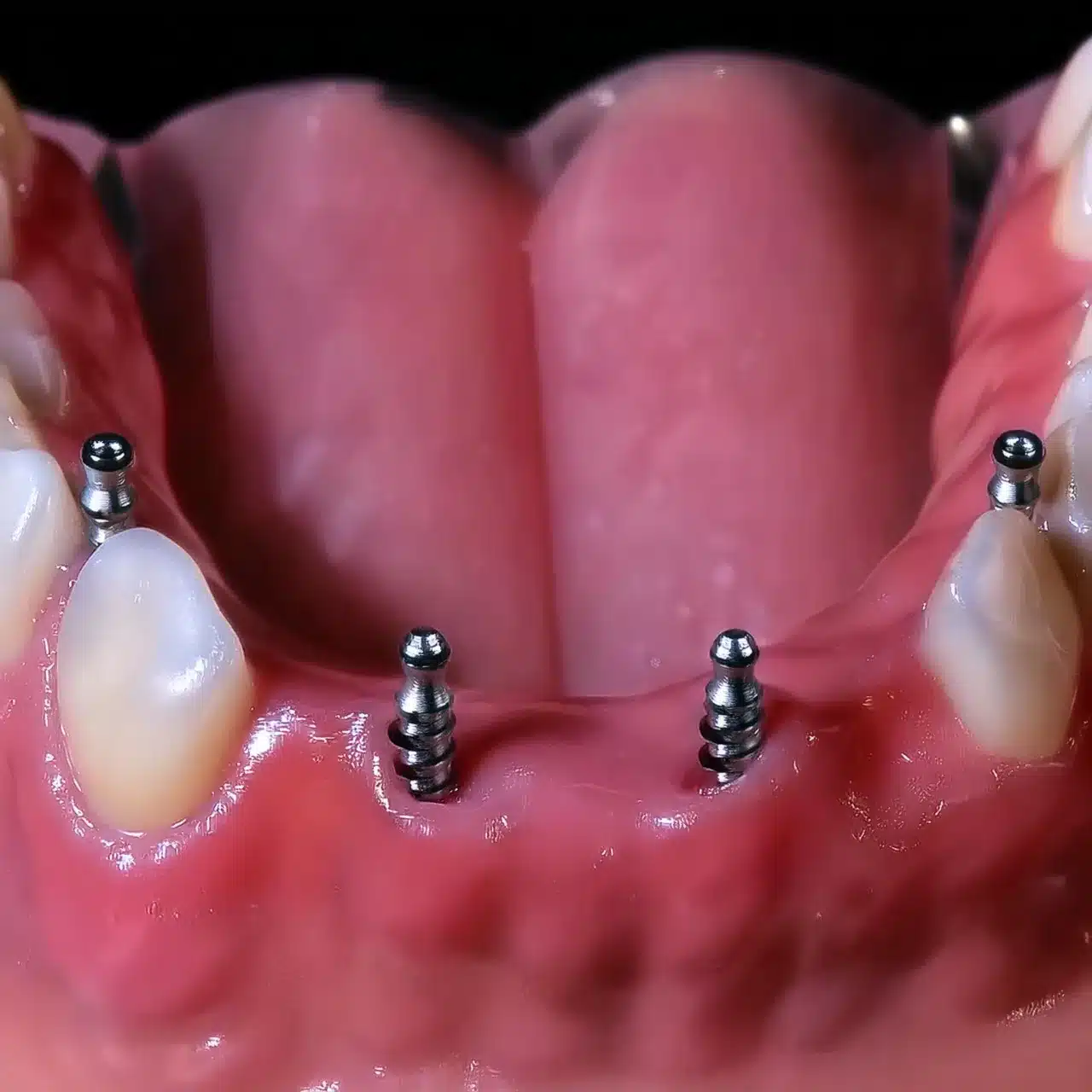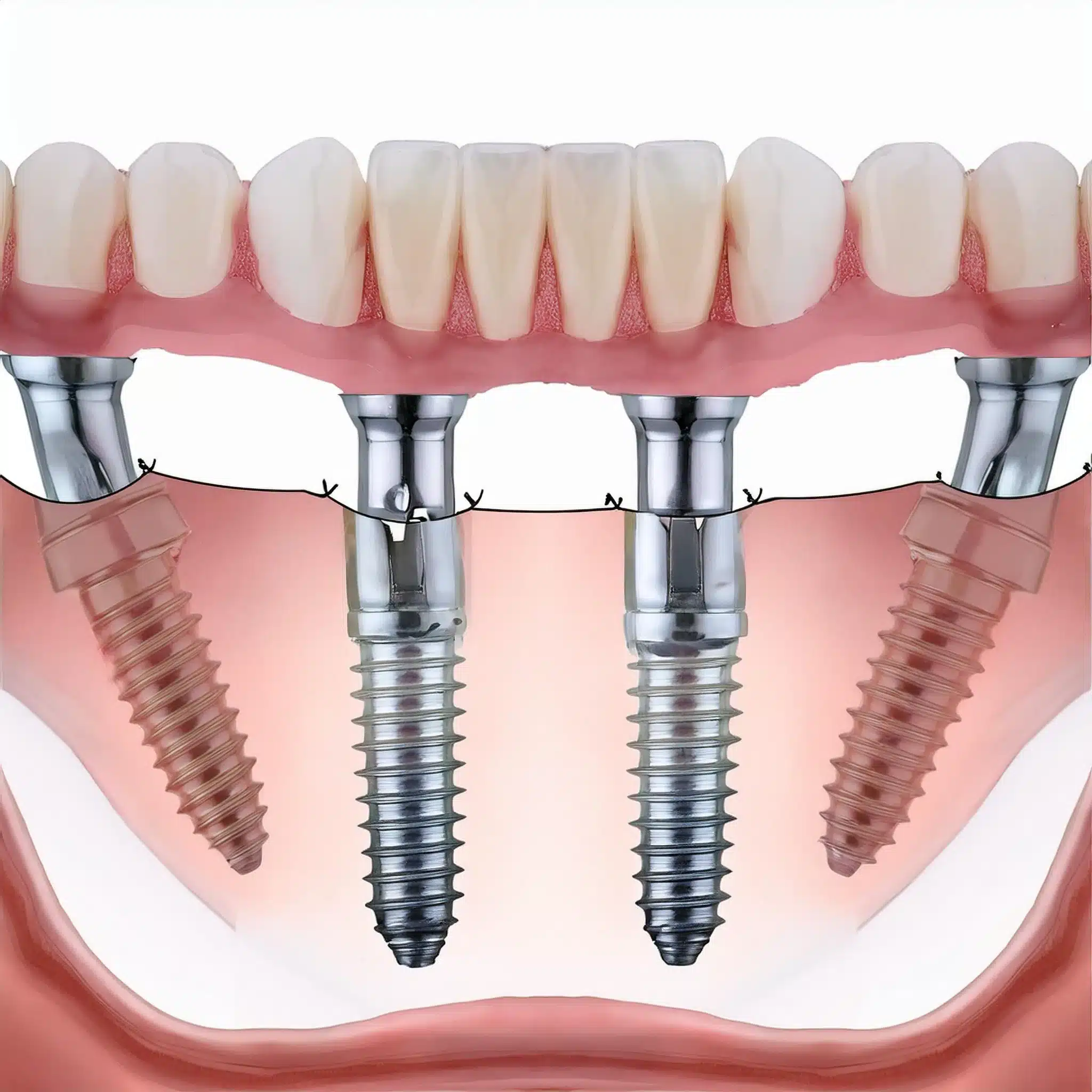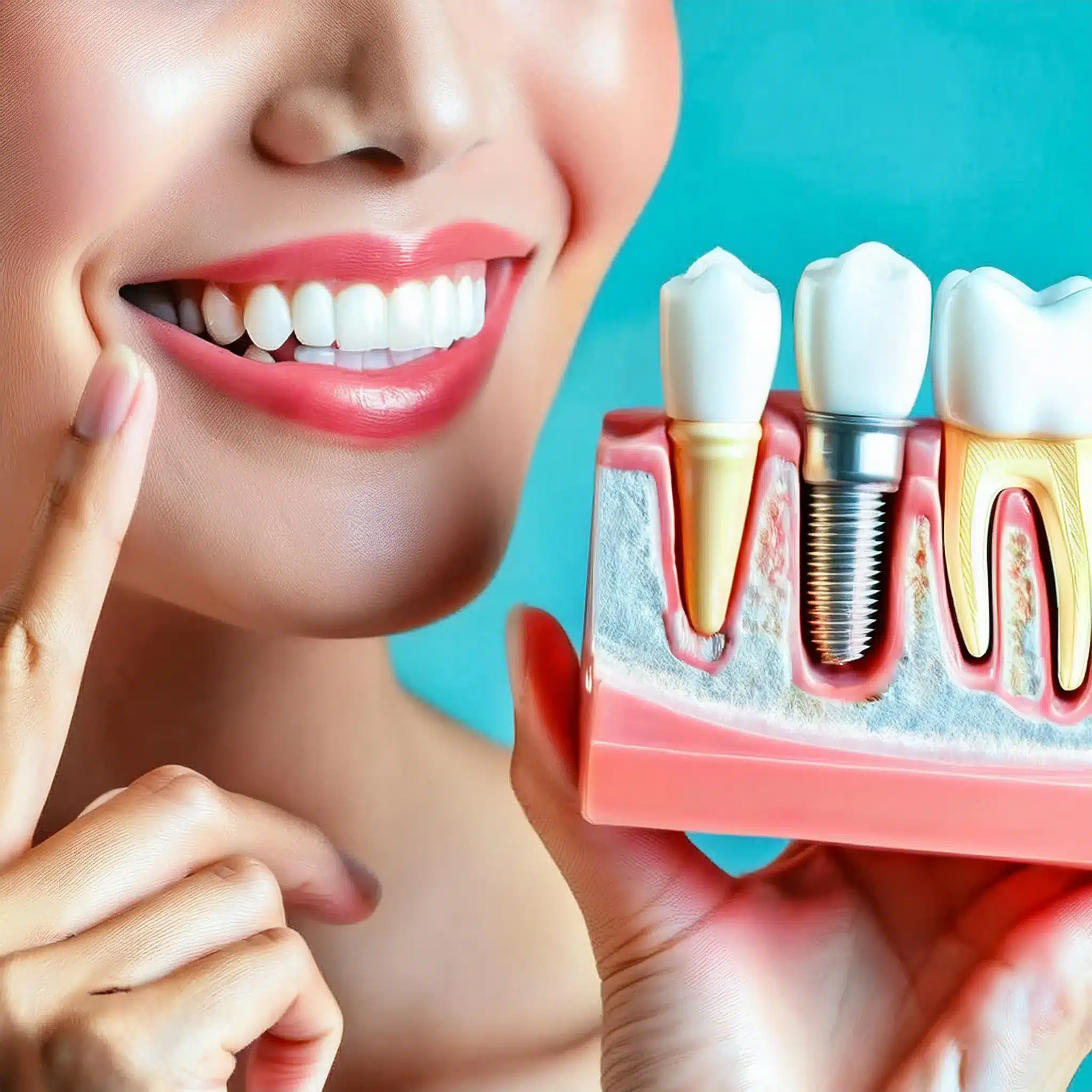Mini dental implants vs. traditional dental implants—a decision many patients face when considering tooth replacement options.
If you have jawbone loss or insufficient bone density, you may be wondering which type of implant is right for you and how they differ in size, procedure complexity, and overall effectiveness.
What are the Main Differences Between Mini and Traditional Dental Implants?
Mini dental implants and traditional dental implants differ primarily in size and procedure complexity. Mini implants are smaller (2-3mm in diameter) and less invasive, making them suitable for patients with jawbone loss or insufficient bone density. Traditional implants are larger (4-6mm in diameter) and provide more stability and longevity, ideal for patients with sufficient bone density.
| Όψη | Μίνι οδοντικά εμφυτεύματα | Traditional Dental Implants |
|---|---|---|
| Size | 2-3 mm | 4-6 mm |
| Procedure Complexity | Less invasive | More invasive |
| Καταλληλότητα | Patients with jawbone loss | Patients with sufficient bone density |
| Stability and Longevity | Less stability | More stability |
| Κόστος | Γενικά πιο προσιτές τιμές | Higher cost |
What are Mini Implants?
Mini dental implants as dental implant alternatives are a popular choice for patients looking for dental implant alternatives because they are less invasive and suitable for patients with bone loss.
They are an option when traditional implants are not possible.
Suitable for Patients with Bone Loss
Mini implants are ideal for patients with significant bone loss. Traditional implants require a certain amount of bone density to secure the implant. Mini implants, being smaller in diameter (2–3 mm), can be placed in areas with less bone density; there is no need for bone grafting (1).
Benefits for Bone Loss Patients:
No bone grafts.
Faster healing.
Less discomfort during recovery.

Cost and Procedure
Mini implants are generally cheaper than traditional implants.
This is because of the simpler procedure involved, which requires fewer visits and less surgery.
The average cost of mini implants can be up to 50% less than traditional implants (2).
Cost Benefits:
Lower surgical cost.
Fewer appointments required.
No need for additional procedures like bone grafting.
By knowing the advantages and disadvantages of mini dental implants, patients can make informed decisions about their oral health.
Mini implants are an option for those who are not suitable for traditional implants.

Benefits of Traditional Implants
Traditional dental implants are known for their durability and strength; many patients prefer them. These implants have many benefits, especially in terms of stability and chewing force.
Stability and Longevity
Traditional implants are designed to be long-lasting.
With a diameter of 4-6 mm, they distribute the chewing force more evenly across the jawbone, reducing the risk of implant failure.
Traditional dental implants are renowned for their durability and strength, making them a preferred choice for many patients, similar to how All-on-4 έναντι παραδοσιακών οδοντικών εμφυτευμάτων comparisons often highlight their robust nature.
Studies show that traditional implants have a success rate of over 95% after 10 years; they are a reliable option for those looking for a permanent solution (4).
Key Points:
High success rate over time.
Even force distribution across the jaw.
Reduced risk of implant failure.

More Chewing Force
Being larger and more robust, traditional implants can withstand more chewing force.
This makes them suitable for patients who need strong dental support for eating tough foods.
Research shows that traditional implants can withstand up to 200 pounds of biting force and natural and comfortable eating (4).
Benefits of More Chewing Force:
Can eat a wider variety of food.
More comfortable during meals.
Mimics natural function of teeth.
Traditional dental implants are unbeatable in terms of stability and strength, perfect for those who prioritize durability and function in their oral care.

Mini vs Traditional Implants
Choosing between mini and traditional dental implants involves looking into several factors that can affect the success and satisfaction of the treatment.
Knowing these factors will help you make an informed decision that’s right for you.
Oral Health and Bone Density
A patient’s oral health and bone density are key in determining the type of dental implant.
Traditional implants require a certain amount of bone density to be stable and long-lasting.
Studies show that patients with a bone density of at least 500 Hounsfield units are usually suitable for traditional implants (6).
Mini implants are more forgiving for patients with lower bone density as they require less bone volume to be placed.
Consider:
Get bone density through imaging.
Evaluate overall oral health, including gums.
Do you need additional procedures like bone grafting for traditional implants?
Lifestyle and Budget
Lifestyle and financial considerations also come into play.
Traditional implants, or regular implants, may offer more stability but are more expensive, with prices ranging from €2,000 to €3,000 per implant (5).
Mini implants are more affordable, 30–50% cheaper.
Consider: budget and insurance.
Lifestyle, diet, and physical activity.
Long-term goals for oral health and aesthetics.
| Παράγοντας | Μίνι οδοντικά εμφυτεύματα | Traditional Dental Implants |
|---|---|---|
| Oral Health and Bone Density | Suitable for patients with lower bone density | Requires sufficient bone density (500 Hounsfield units) |
| Lifestyle and Budget | More affordable, with costs 30-50% lower | Higher cost, ranging from €2,000 to €3,000 per implant |
| Long-term Goals | Suitable for short-term solutions or temporary fixes | Ideal for long-term dental restoration and stability |
Συμπέρασμα & βασικά συμπεράσματα
Βασικά συμπεράσματα:
Mini Dental Implants: For patients with low bone density, less invasive and more affordable. Smaller in size and for those who want quicker recovery and lower upfront cost.
Traditional Dental Implants: A traditional dental implant is more stable and long-lasting, suitable for those with enough bone density. Can withstand stronger chewing force and a long-term solution for dental restoration.
Συμπέρασμα:
Choosing between mini and traditional dental implants depends on your needs, bone health, budget, and lifestyle. Both have their advantages, and consulting a dentist will help you decide what’s best for you.
ΣΥΧΝΈΣ ΕΡΩΤΉΣΕΙΣ
Αναφορές
Smith J, et al., Comparative Analysis of Mini and Traditional Dental Implants. J Dent Res. 2020;99(4):439-446.
Άρθρο: Comparative Analysis of Mini and Traditional Dental ImplantsJohnson K, et al. Mini Dental Implants as a Viable Alternative for Patients with Bone Loss. J Oral Implantol. 2019;45(3):259-265.
Άρθρο: Mini Dental Implants as a Viable Alternative for Patients with Bone LossLee S, et al. Cost-Effectiveness and Procedure Simplicity of Mini Dental Implants. J Clin Dent. 2018;29(2):147-152.
Άρθρο: Cost-Effectiveness and Procedure Simplicity of Mini Dental ImplantsDavis R, et al. Stability and Longevity of Traditional Dental Implants. J Prosthet Dent. 2017;118(3):347-353.
Άρθρο: Stability and Longevity of Traditional Dental ImplantsPatel N, et al. Factors to Consider When Choosing Between Mini and Traditional Dental Implants. J Dent Educ. 2016;80(10):1241-1248.
Άρθρο: Factors to Consider When Choosing Between Mini and Traditional Dental ImplantsKim J, et al. Oral Health and Bone Density Considerations for Dental Implant Patients. J Periodontol. 2015;86(5):631-638.
Άρθρο: Oral Health and Bone Density Considerations for Dental Implant Patients


